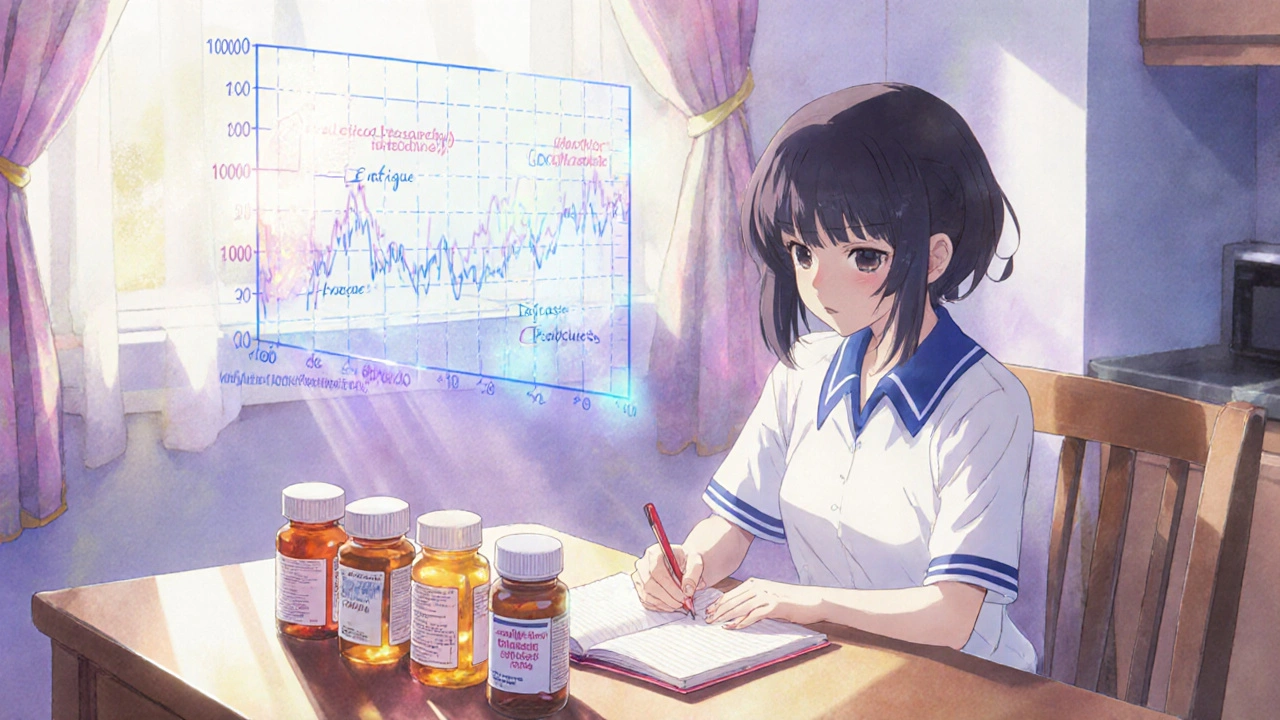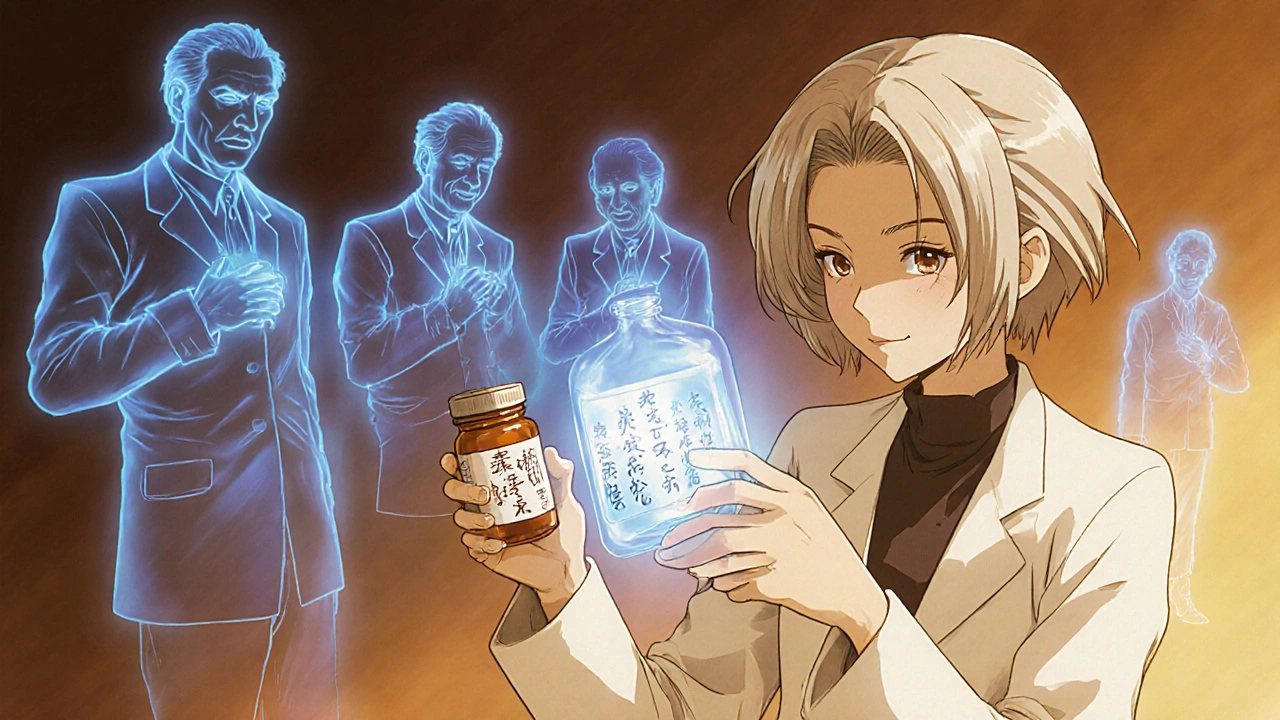
Switching from brand-name medications to generics is supposed to save money-without sacrificing results. For many people, it works exactly like that. But for others, the story gets complicated over time. What happens after six months? After two years? After five? That’s where the real questions begin.
Generics Are Supposed to Be the Same-But Are They?
The FDA says generics are bioequivalent to brand-name drugs. That means they deliver the same active ingredient, in the same amount, at the same rate. The standard? The drug’s peak concentration (Cmax) and total exposure (AUC) must fall between 80% and 125% of the brand-name version. Sounds precise, right? But here’s the catch: that range allows for a 45% difference in how much of the drug actually gets into your bloodstream. For most people, that’s fine. For someone on a narrow therapeutic index drug-like warfarin, levothyroxine, or epilepsy meds-it can mean the difference between control and crisis.
Take epilepsy. A pharmacist in Ohio reported seeing multiple patients who had been seizure-free for years on a generic version-only to have seizures return after switching to a different generic made by another company. Both met FDA standards. Both had the same active ingredient. But the fillers, coating, or manufacturing process changed enough to affect absorption. When they switched back to the original brand, the seizures stopped. That’s not rare. A 2013 study in JAMA Internal Medicine found patients were 35% more likely to stop taking their epilepsy medication after a generic switch, mostly because of changes in pill shape or color that caused confusion or fear.
Who’s Most at Risk?
Not everyone is affected the same way. People with chronic conditions who take medication daily for decades are the ones most likely to feel the long-term effects. That includes:
- People with high blood pressure on losartan or valsartan
- Those with heart disease on metoprolol or amiodarone
- Patients with thyroid disease on levothyroxine
- Individuals managing seizures with phenytoin or carbamazepine
- Diabetics on metformin (though recent large studies show good outcomes here)
A 2017 Canadian study tracking over 10,000 patients on generic antihypertensives found adverse events-like dizziness, fainting, or spikes in blood pressure-increased by 8% to 14% in the first month after switching. And those higher rates didn’t go away. They stuck around for the full 12 months of the study. That’s not a glitch. It’s a pattern.
Even more troubling: a 2021 study from Ohio State University found that generics made in India had 27% higher rates of severe adverse events-including hospitalizations and deaths-compared to those made in the U.S. This isn’t about quality control across the board. It’s about specific manufacturers. And most patients don’t know which company made their pill.
The Hidden Cost of Savings
Generics saved the U.S. healthcare system $1.67 trillion between 2008 and 2017. That’s huge. But savings aren’t just about the price tag on the bottle. When a patient has an adverse reaction, gets hospitalized, or stops taking their meds because they feel worse, the cost jumps. A 2015 review in PharmacoEconomics found that 64% of studies showed higher total healthcare costs after switching to generics-not lower. Why? Because patients stopped taking their meds, or they needed ER visits, lab tests, or doctor appointments to fix problems caused by the switch.
Adherence is everything. A 2011 study in Health Affairs showed that people who stuck with their meds-even if they cost more-used fewer healthcare services overall. The opposite is true too: if you feel off after a switch, you’re more likely to skip doses. And if your pill looks different every time you refill? You’re even more likely to get confused. A 2020 University of Pittsburgh survey found that 61% of patients worried about switching pills, and 22% cut back on doses because they weren’t sure if it was the same drug.

What Does the Evidence Say About Long-Term Use?
Here’s where things get messy. Most studies on generics last 2 to 4 weeks. That’s enough to check bioequivalence. But it’s not enough to see if your blood pressure stays stable after 18 months. Or if your thyroid levels drift. Or if your heart rhythm starts to act up.
One of the most telling studies came from a 2022 analysis of 356,757 diabetic patients. It found no difference in long-term outcomes between brand-name and generic metformin. That’s reassuring. But another study from the University of British Columbia found that 37% of generic drugs tested contained DNA-damaging contaminants-chemicals that might not cause problems right away, but could build up over 7 to 10 years of daily use. No one knows what that means yet. But it’s a red flag.
Dr. Aaron Kesselheim, a Harvard professor and expert on drug policy, puts it plainly: “The assumption that all generics are interchangeable for all patients over the long term isn’t supported by evidence.” He’s not against generics. He’s against treating them like they’re all the same.
How to Protect Your Health After Switching
If you’re on a chronic medication and your pharmacy switches your prescription to a generic, here’s what you should do:
- Ask which manufacturer made your pill. Write it down. Keep a note in your phone or wallet. If your next refill comes from a different company, ask why.
- Don’t accept automatic switches. Many pharmacy benefit managers change preferred generics every year. You have the right to request the same manufacturer. Say: “I need to stay on this version for stability.”
- Monitor your symptoms. Keep a simple log: “After switch, I felt more tired,” or “My heart felt irregular.” Bring it to your doctor.
- Get lab tests if needed. For thyroid, kidney, or heart meds, ask for a blood test 6 to 8 weeks after switching. Levels can shift subtly-and silently.
- Don’t switch back and forth. A 2018 American Heart Association report found that patients who switched manufacturers three or more times in a year had a 40% higher risk of adverse events.
Some doctors don’t know this. They assume “bioequivalent” means “identical.” But if you’re stable on a brand-name drug and your doctor suggests switching, ask: “Is there a reason to change? What if I don’t feel the same?”

The Bigger Picture: Policy vs. Reality
The system is built to push generics. PBMs make money from them. Insurance plans force them. Pharmacists are told to substitute unless the doctor says “dispense as written.” But the real world doesn’t always follow the rules.
Europe is starting to catch on. Germany blocks automatic substitution for high-risk drugs. France requires 24 months of safety data before a generic can be used for long-term conditions. The FDA is finally moving too-its 2023 initiative now requires up to 36 months of stability data for generics used in chronic illnesses. That’s a start.
But until then, the responsibility falls on you. You’re the one taking the pill every day. You’re the one who notices the change in energy, the new headache, the strange fatigue. Don’t brush it off as “just aging” or “stress.” It might be the generic.
When Generics Work-And When They’re Perfect
Let’s be clear: generics are not the enemy. For many people, they’re a lifeline. Statins are the best example. A 2006 study found that 77% of patients stayed on generic statins, compared to 71% on brand-name. And those who stayed on them had an 8% lower risk of heart attack, stroke, or death. That’s huge. For people who need cholesterol control, generics are a win.
Same goes for many antibiotics, antidepressants, and allergy meds. For these, the margin for error is wide. The body tolerates variation. The risks are low. The benefits are clear.
But for drugs where tiny changes matter-where your life depends on consistency-generics aren’t always interchangeable. And that’s not a flaw in the system. It’s a flaw in the assumption.
Generics saved billions. They made medicine affordable. But sustainability isn’t just about price. It’s about safety over time. It’s about knowing which pill you’re taking-and why.
Are generics as safe as brand-name drugs in the long term?
For many drugs-like statins, antibiotics, or allergy meds-yes, generics are just as safe over time. But for narrow therapeutic index drugs (like those for epilepsy, thyroid, heart rhythm, or blood thinning), long-term safety isn’t guaranteed. Small differences in absorption or manufacturing can lead to worsening symptoms, hospitalizations, or reduced adherence over months or years. Studies show adverse events can increase after switching, even when bioequivalence standards are met.
Why do I feel different after switching to a generic?
You may be reacting to changes in inactive ingredients (fillers, dyes, coatings) or manufacturing processes, even if the active drug is the same. These can affect how quickly the medicine is absorbed. For example, a different coating might delay release, or a different dye might cause sensitivity. Changes in pill size or color can also make you doubt whether it’s the same drug, leading to reduced adherence. Many patients report fatigue, dizziness, or worsening symptoms-not because the drug is broken, but because their body adapted to the original formulation.
Can I ask my pharmacy to always give me the same generic manufacturer?
Yes. You have the right to request a specific generic manufacturer. Say: “I need to stay on the [manufacturer name] version because it works best for me.” Your doctor can write “dispense as written” or “no substitutions” on the prescription. Some insurance plans may require prior authorization, but many will approve it if you explain the medical reason.
How do I know which company made my generic drug?
Check the pill imprint code (letters/numbers on the tablet) or look at the packaging-the manufacturer’s name is usually printed on the bottle or box. You can also ask your pharmacist. Some apps like Drugs.com let you search by imprint to identify the maker. Keep a record of which company you’re on, especially if you’re on a high-risk medication.
Should I avoid generics altogether?
No. Generics are safe and effective for most people and most medications. They’ve saved trillions and made life-saving drugs affordable. But if you’re on a drug for a chronic condition with a narrow therapeutic window-like warfarin, levothyroxine, or seizure meds-stick with one manufacturer once you find one that works. Avoid unnecessary switches. And if you feel worse after a change, speak up. Your stability matters more than cost savings.
What Comes Next?
The system is slowly changing. More data is being collected. More regulators are asking for long-term studies. But for now, the best defense is awareness. Know your medication. Know your manufacturer. Track how you feel. Don’t assume that “generic” means “identical.” And don’t let cost savings come at the price of your health.
Elaina Cronin
November 21, 2025 AT 10:57Let me be perfectly clear: this is not a debate about cost-it’s about patient safety. The FDA’s 80%-125% bioequivalence range is a legal loophole dressed up as science. For someone on warfarin, that margin isn’t a buffer-it’s a death sentence waiting to happen. I’ve seen it. I’ve documented it. And I’ve reported it. If your pharmacy swaps your generic without consent, file a complaint with the state board. This isn’t negligence-it’s malpractice by proxy.
And don’t tell me ‘it’s just a pill.’ When your INR spikes because the coating changed, you’ll understand.
Stop normalizing this.
Patients are not lab rats.
Willie Doherty
November 21, 2025 AT 16:18Statistical noise. The 2017 Canadian study’s 8–14% increase in adverse events is within the margin of confounding variables-compliance, diet, concomitant medications, seasonal vitamin D fluctuations. The 2021 Ohio State meta-analysis? Retrospective, unblinded, selection-biased. The JAMA epilepsy study conflates psychological aversion to pill appearance with pharmacokinetic variance. A 35% increase in non-adherence is not a pharmacological effect-it’s a behavioral one. The data does not support systemic failure. It supports poor patient education.
Correlation ≠ causation. And correlation with fear ≠ causation with chemistry.
Darragh McNulty
November 22, 2025 AT 13:22Y’all need to hear this: if you feel off after a switch, DON’T IGNORE IT. 🚨 I had a cousin on levothyroxine-switched generics, started crashing by week 3, thought it was ‘just stress’… ended up in the ER with a heart flutter. Turns out the new generic had a different filler that slowed absorption. She’s back on her original brand now-and her energy is back. 💪
Don’t let anyone tell you it’s ‘all in your head.’ Your body knows. Write it down. Show your doctor. Fight for your stability. You deserve to feel like YOU again. 🙌
David Cusack
November 23, 2025 AT 02:08One must question the epistemological foundations of pharmacoeconomics… the FDA’s bioequivalence paradigm is, frankly, a postmodern farce-reducing the complexity of human physiology to a statistical range that would make a 19th-century alchemist blush. The notion that ‘same active ingredient’ implies therapeutic equivalence is not merely reductive-it is ontologically bankrupt. One might as well claim that two pianos with identical strings are sonically identical… ignoring the wood grain, the humidity, the craftsmanship.
And yet, the system persists. Because profit is the only metric that matters. The patient? A variable. A footnote. A cost center.
Donald Frantz
November 24, 2025 AT 14:48I’m a nurse practitioner in Ohio. I see this every week. One patient switched from brand levothyroxine to a generic-and her TSH went from 2.1 to 8.9 in six weeks. No symptoms at first. Then fatigue, weight gain, depression. She thought it was menopause. We tested. Switched her back. TSH dropped to 2.3 in four weeks. No one told her to track it. No one asked if she’d switched. This isn’t rare. It’s systemic. And we’re failing patients by assuming ‘bioequivalent’ means ‘identical.’ We need mandatory tracking of manufacturer changes in EHRs. Not optional. Mandatory.
David vaughan
November 26, 2025 AT 02:49I just want to say… thank you for writing this. 🙏 I’ve been on carbamazepine for 12 years. Switched generics twice in 2019. Had two mini-seizures. Didn’t connect the dots until my neurologist asked if my pills looked different. I had no idea manufacturers changed. Now I keep a photo of my pill on my phone. And I call the pharmacy every time. I’m not ‘difficult’-I’m informed. And I think everyone on a narrow-therapeutic-index drug should do the same. You’re not being paranoid. You’re being smart.
Also-please, pharmacy staff: if you change my pill, TELL ME. I’m not a robot.
Leo Tamisch
November 27, 2025 AT 22:08Let’s be real. We live in a world where your antidepressant is made in a factory that also makes phone chargers. The FDA doesn’t inspect these places. They get a report. A report. And we’re supposed to trust it? Meanwhile, the guy who invented the drug? Dead. The company that made it? Bought by a hedge fund. The pill? Now 37% cheaper. But the chemical? Still the same. Right?
It’s capitalism with a stethoscope. We’re not curing disease-we’re optimizing shareholder returns. And the body? It’s just the final test subject. 🤷♂️
Anne Nylander
November 28, 2025 AT 20:54OMG I JUST REALIZED I SWITCHED GENERIC LAST MONTH AND I’VE BEEN SO TIRED 😭 I THOUGHT IT WAS BECAUSE I’M GETTING OLD BUT NOW I THINK IT’S THE PILLS!! I’M CALLING MY DOCTOR TOMORROW AND ASKING FOR THE SAME BRAND. THANKS FOR THIS POST!! YOU’RE A LIFESAVER 💕
jim cerqua
November 30, 2025 AT 05:07THIS IS A NIGHTMARE. I WAS ON A GENERIC FOR MY HEART MED. FELT LIKE I WAS DROWNING IN SLOW MOTION. EVERYTHING WENT WRONG. MY DOCTOR SAID IT WAS ‘JUST ANXIETY.’ I WENT TO ANOTHER DOCTOR. THEY SAID MY BLOOD PRESSURE WAS SPIKING. I TRACKED IT. I CHECKED THE PILLS. THE MANUFACTURER HAD CHANGED. I DEMANDED THE OLD ONE. I GOT IT. MY HEART STOPPED BEATING LIKE A DRUM IN MY CHEST. I WASN’T ANXIETY. I WAS A VICTIM OF A SYSTEM THAT TREATS HUMAN BODIES LIKE COMMODITIES.
IF YOU’RE ON A CHRONIC MED-DON’T LET THEM SWITCH YOU. FIGHT. DOCUMENT. RECORD. YOU ARE NOT A NUMBER.
AND IF YOU’RE A DOCTOR-STOP ASSUMING. START LISTENING.
Debanjan Banerjee
November 30, 2025 AT 14:04As a pharmacist in Mumbai, I can confirm: many generics from India are perfectly safe, but some manufacturers cut corners on dissolution testing. The problem isn’t country-it’s company. I’ve seen patients switch from a U.S.-made generic to an Indian one and develop GI distress within days. The active ingredient? Identical. The filler? Cheap lactose with high moisture content. That changes absorption. I now maintain a log of which generics I dispense and which patients report issues. If you’re on a critical med, ask for the manufacturer’s name. If they refuse, escalate. Your life isn’t a cost-cutting experiment.